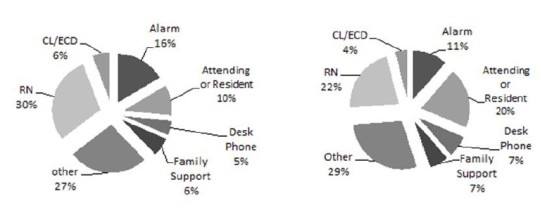All US trauma centers verified by the American College of Surgeons (ACS) must now subscribe to the ACS Trauma Quality Improvement Program (TQIP). This program allows each center to benchmark themselves against other trauma centers that are just like them (level, volume, acuity, etc). Every quarter, TQIP members receive a report that details their performance in a number of key categories. The report slices and dices a large number of data points, and shows how they compare to those other trauma centers.
One of the more interesting portions of the TQIP report deals with risk-adjusted complications. The one I wrote about yesterday, the “ICU bounce back,” is officially called an “unplanned ICU admission.”
I’ve had several trauma centers ask me what constitutes an unplanned ICU admission. Is it any bounce back? What about patients who were never in the ICU?
This questions is particularly important to me because my own center’s TQIP report shows that we have a significant number of unplanned ICU admissions. But I know for a fact that they are not surprises. We have an inpatient trauma unit, with capabilities somewhere between the usual ward bed and an ICU bed. Patients can get telemetry, continuous oximetry, vital signs every 2 hours, and more. It functions as a kind of step-down unit, so we frequently admit patients who may require ICU admission at other hospitals.
Every once in a while, a patient who is receiving care in the trauma unit shows signs that they are going to need a true ICU level of care. In that case, we promptly move them to the ICU before they decompensate any further.
Is that situation an “unplanned ICU admission?” In my opinion, no. The patient received the highest level of care while outside the ICU, and ultimately a considered decision was made to move them. In my mind, this is a “planned ICU admission.”
Bottom line: There are two issues at play if your “unplanned ICU admissions” get flagged on your TQIP report. The first is determining if it was truly unplanned. If the Rapid Response Team (RRT) was called, then it was almost certainly unplanned. But if the patient was being monitored properly, showed signs that they would need an ICU level of care, and was preemptively transferred there, it was not. Similarly, if one of your surgical specialists wants the patient transferred (e.g. MAP goals), then that is also a planned admission.
The second factor is figuring out why the admissions are getting reported to TQIP as unplanned. This is usually a trauma registrar issue. They may be looking for any ward to ICU transfer, and classifying it as unplanned. Educate all your registrars on the nuances of what is planned and what isn’t.
If you are on the receiving end of a TQIP variance on unplanned ICU admissions, use the drill-down tool to identify the exact patient records involved. Review the involved medical records, paying close attention to vital signs, monitoring, and all decision making leading up to the time of the ICU transfer. If it isn’t truly unplanned, educate your registrars. But if it is, make sure that it was properly dealt with by your trauma performance improvement program.


